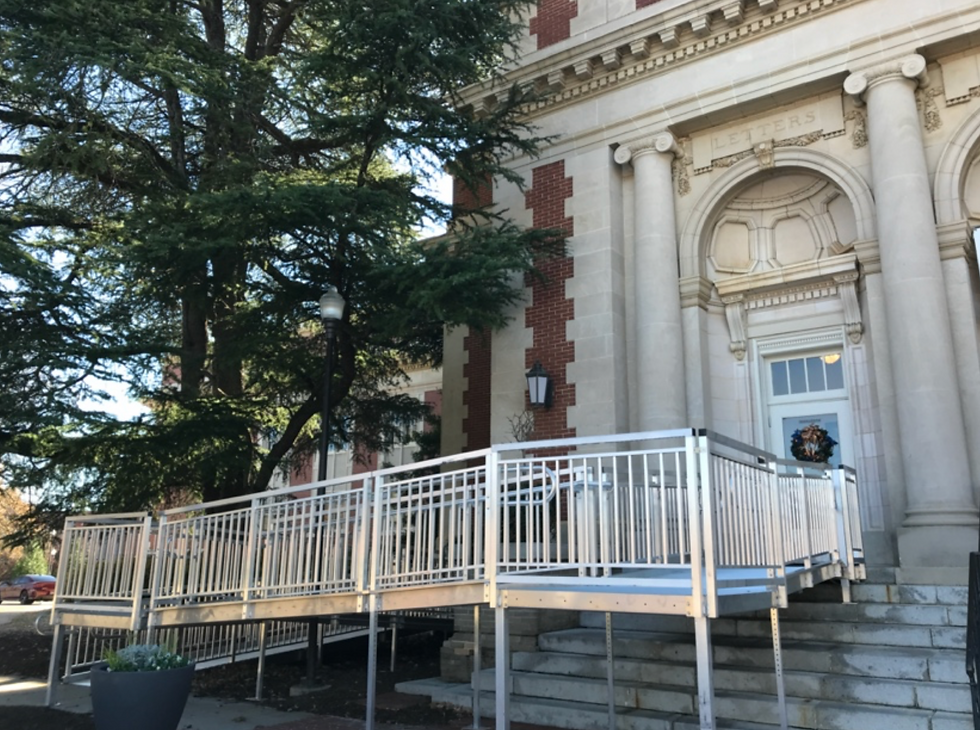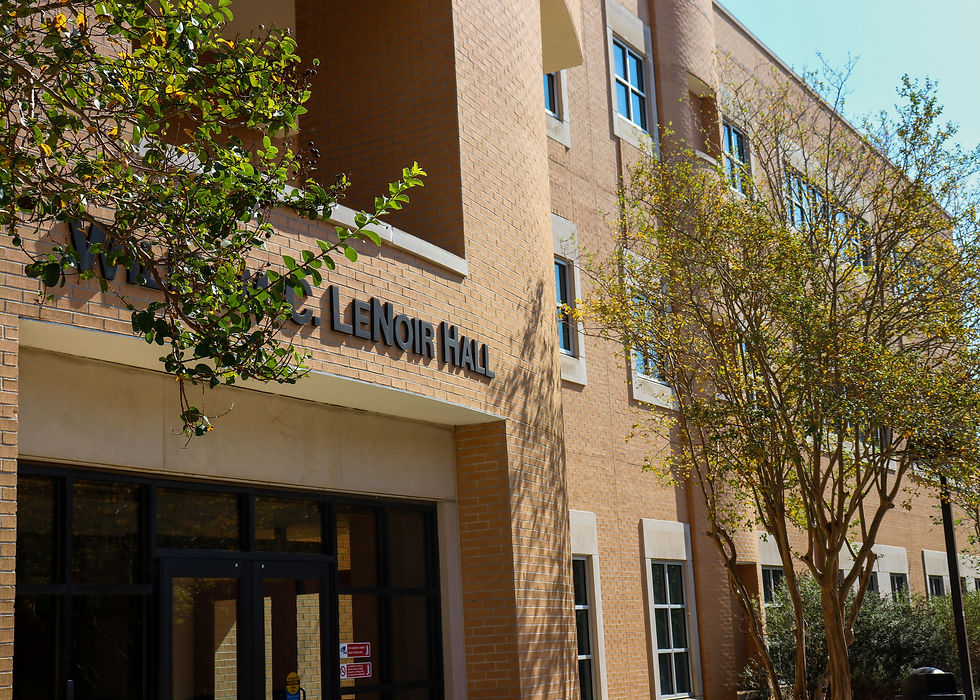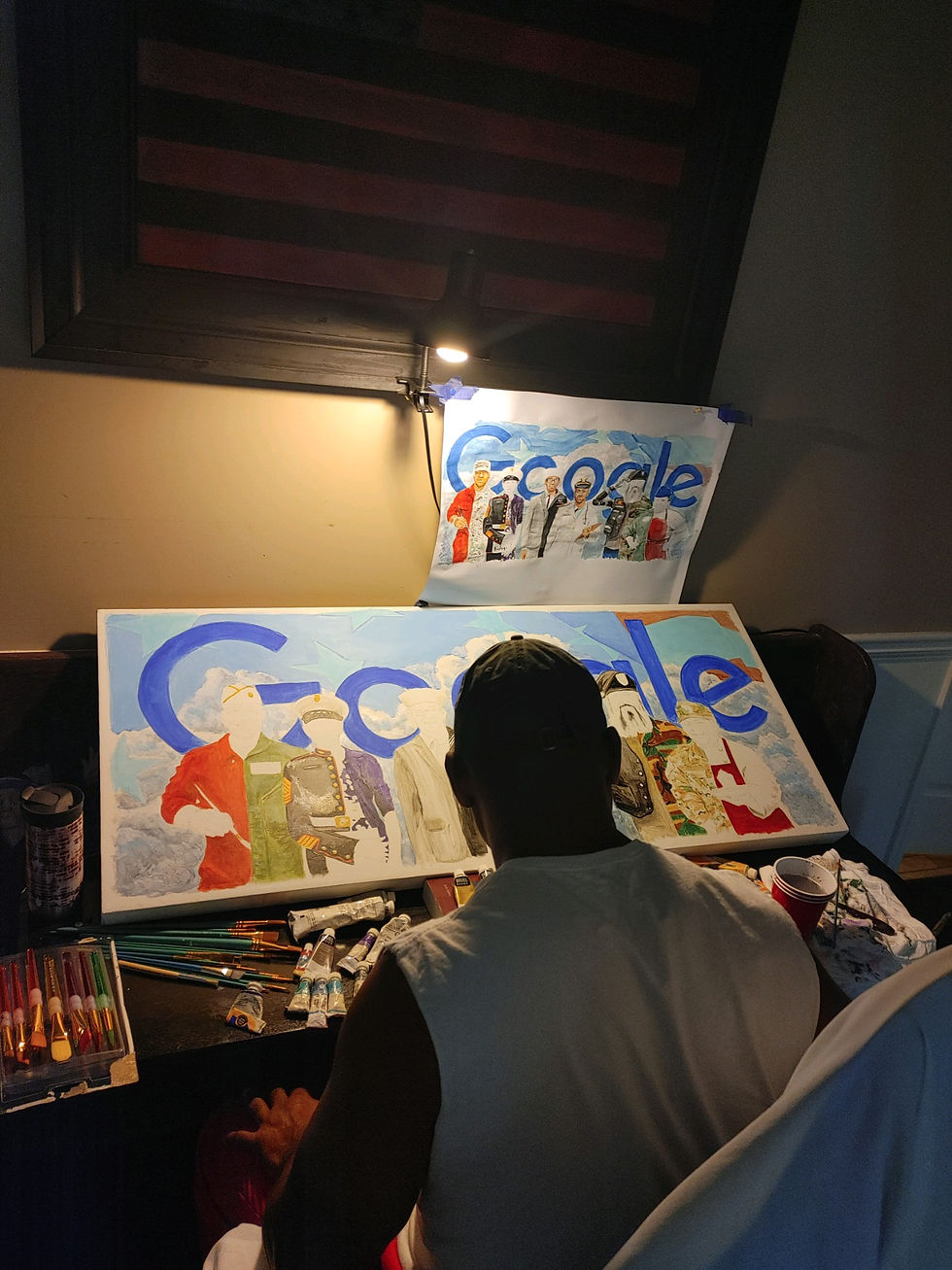How Auburn has Adapted to its Disabled Residents
- Grace Reynolds
- Dec 27, 2019
- 6 min read

According to the most recent U.S. census data, 5.6 percent of Auburn residents are disabled. In a population of approximately 66,000 people, that equates to over 3,600 residents.
Those residents navigate downtown streets, historic buildings and government services and programs just as the other 62,400 residents do. The city and the university are responsible for ensuring accessibility measures are in place.
Disability is hard to define
The National Educational Association of Disabled Students breaks disabilities down into six categories: physical, intellectual/learning, psychiatric, visual, hearing and neurological.
The U.S. Census Bureau uses six aspects of disability to come up with a percentage of disabled residents in a community: hearing, vision, cognitive, ambulatory, self-care and independent living.
The Americans with Disabilities Act of 1990 defines a disability as “a physical or mental impairment that substantially limits one or more major life activities, a person who has a history or record of such an impairment, or a person who is perceived by others as having such an impairment.”
The ADA does not specifically name all impairments that are covered under the law. The landmark legislation is now the standard for both public and privately-owned buildings in the country.
The current act is broken down into four parts—employment, public services, accommodations and services by private entities and telecommunications.
The United States became the first country to enact federal accessibility laws
in 1968.
Regardless of the definition, these disabilities do not have to be congenital. The term disability also applies to people who use wheelchairs, crutches or other accessibility equipment for a limited period of time.
Accessibility enforcement varies city to city
While the ADA lays out strict parameters to ensure accessibility, it is hard to enforce those across American communities. Unlike electricity or plumbing guidelines for buildings, accessibility measures often vary place to place.
Larger cities tend to have more resources to enforce accessibility. More rural communities often do not have their own inspection services, instead relying on the state office to look over building plans. There is a gray area when it comes to existing, especially historical, buildings and their accessibility measures. Some problems are not dealt with until a resident files a complaint, and even then the process can be slow.
City of Auburn’s Inspection Services director and ADA Coordinator John Hoar considers Auburn to be one of the strictest accessibility enforcers in Alabama. “We actually take a pretty aggressive, comprehensive approach to accessibility,” he said.
That approach was mapped out five years ago in the city’s Transition Plan where the city self-evaluated existing ADA measures.
Hoar’s office is responsible for reviewing both private and public building plans. It is a very detail-oriented job, with Hoar and his two co-workers meticulously inspecting plans to check things likes how wide bathroom stalls are to ensuring doors have a metal lip for wheelchairs to roll over. The office also works with contractors during the construction process to ensure the building is being built in compliance with ADA requirements.
The process for ensuring accessibility measures are in place can be a quick one, if the architects are prepared. In Auburn, it usually takes two weeks to complete the inspection process on blueprints and have the developer submit an updated proposal.
During the construction process, if requirements like how high up the wall thermostats are or how big the cracks in freshly laid concrete are become out of tolerance with ADA requirements, the city requires the developer to redo the work. That cost falls to the developer and can sometimes delay the opening of a retail or residential building.
While accessibility measures look like an afterthought on buildings such as the ramp on Mary Martin Hall on Auburn University’s campus, it does not have to be an eyesore to architecture. The City of Auburn’s new municipal complex, currently under construction, has ramps seamlessly built into the grand entrance.
“You can stick a ramp on the front of a building and make it look bad. Or you can incorporate it into the landscape, the hardscape,” Hoar said.
Hoar’s office deals only with buildings within city limits. The office has recently begun to work with university buildings that are in Auburn’s Research Park, including the daycare, Big Blue Marble Academy. Buildings on Auburn’s main campus, however, are assessed by the state.
Historical buildings present a problem for the Loveliest Village
In both the city and on the campus, Auburn has several old, historical buildings.
Built in a time before ADA requirements like handrails and elevators, many of these buildings would not pass under the accessibility requirements of today. The ADA does not require historical buildings to be compliant with the law unless they undergo a renovation significant enough to substantially change the building.
But, if the building has enough of a historical significance, there may be a way around bringing it up to code. That is what the university has done with Samford Hall and Mary Martin Hall on campus, neither of which have elevators to access higher floors.
Kelley Taylor is the Director of the Office of Affirmative Action and Equal Employment Opportunity. The office is essentially a civil rights office for employees and students who run into issues with accessibility or unfair treatment on campus. Taylor deals with improving campus accessibility and ways to accommodate individuals who need more accessible options.
Taylor says the issue with historical buildings is much bigger than just the expense of adding an elevator and getting rid of offices to do so.
“I think there’s really a sense of ‘this building is beautiful and historic’. It is a frustration point for me,” she said. “The Auburn Family is very large and we have a lot of different people with different perspectives. A lot of people think it’s wonderful like it is.”
Sophomore Zach Dickey, who uses a wheelchair, said he understands it’s hard to make historic buildings completely accessible. “That’s part of the reason I wanted to come to Auburn, because the campus is so old and beautiful,” he said.
Still, he communicates issues like unmarked accessible entrances or ramps that are too steep to the university in hopes of making it easier for him and other students to navigate.
Taylor wants to see the university be more proactive with accessibility measures, like the city is currently doing.
“I would just love to see us have the, the wherewithal to say, ‘let’s just really take this forward even though we don’t have to,’” she said.
But, for now, if employees are unable to work in the building that their office is in, they are moved to a different office.
“If you can’t immediately change the physical problem, then you make sure that you have some sort of relocation option,” Taylor said.
Still, the inconvenience of working in a separate building than the rest of the office is one of the things that the university’s Persons with Disabilities Committee, of which Taylor is on, talks about.
“I really, really count on the wisdom of those others and their help,” she said.
Hoar noted that the buildings are getting older, but so are Auburn residents. “The baby boomer generation is getting older, so the accessibility needs are becoming greater,” he said.
Accessibility is bureaucratic
With accessibility comes some red tape. Accessibility issues in America are reconciled by a variety of different departments, including:
U.S. Department of Justice
U.S. Equal Employment
Opportunity Commission
U.S. Access Board
U.S. Department of Labor
U.S. Department of
Transportation
Federal Communications
Commission
U.S. Department of Housing
and Urban Development
Federal Emergency
Management Agency
This often leads to confusion for residents wishing to file complaints and a slower process for problems to be addressed and corrected.
On a city level, Auburn residents can file grievances with Hoar. On campus, students request accommodations from the Office of Accommodations and
can file complaints about their accommodations with Taylor’s office. Campus employees and visitors deal exclusively with Taylor’s office to address accessibility concerns. Dickey said cars are one of the main issues he runs into on campus.
“Tailgaters are hard because they will park their cars on the sidewalks. I have to either swing out into the road or go through the grass and mud, which dirties up my chair,” he said.
At the university, accessibility issues are dealt with by Taylor’s office, the Office of the University Architect, the Facilities Management office and the Office of Inclusion and Diversity. Other university offices also weigh in on the Persons with Disabilities Committee.
The goal of accessibility is “independence”
Ultimately, Hoar said, the goal of providing accessible measure to residents is to ensure that they can maintain as much independence as possible.
“It’s just trying to make little features easier for them, so they have the same universal approach,” he said. “It affords people the independence they desire.”
Taylor agreed. “There’s the regulation piece of it and of course we want to comply with all the regulations,” she said. “But there’s the letter of the law and the spirit of the law. That’s where you’re saying, ‘we want to be known as the school that did more than we had to.’”
For now, Auburn is focused on accommodating residents
Even with the threat of historical buildings needing renovations, the university is working to accommodate employees where they are at. Accommodations can include purchasing a standing desk for an employee with a need for lumbar support, creating alternate hours if an employee takes a medication that creates morning drowsiness, changing an employee from a cubicle to an office to limit distractions or purchasing a noise machine to help the employee focus.
“If you come to them with problems, the Office of Accessibility is pretty good,” Dickey said.
“It’s a lot more than just mobility,” Hoar said. At a city level, accommodations include having documents available in braille, having sign language interpreters available at public events, providing closed captioning for livestreamed city meetings and others. Hoar looks at accessibility as more than just helping people. That sense of independence, and equality, is critical to the 3,600 Auburn residents that identify as disabled.




Comments